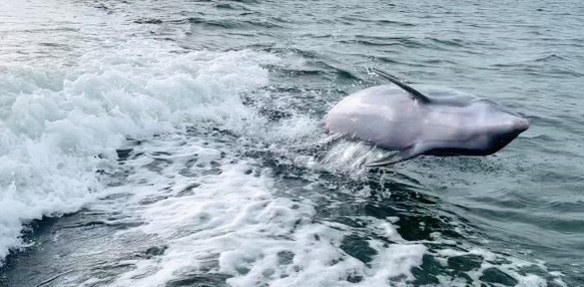
Dolphins engage in jumping or leaping behavior for various reasons, and these behaviors can serve different purposes. While the exact motivations can vary among individuals and situations, here are some common reasons why dolphins jump:
- Play and Social Interaction:
- Dolphins are known for their playful nature, and jumping is often a part of their play behavior. It can be a way for dolphins to have fun, interact with each other, and strengthen social bonds within the pod.
- Communication:
- Jumping can serve as a form of communication between dolphins. It may convey excitement, express feelings of joy or playfulness, and attract the attention of other members in the group.
- Hunting and Foraging:
- Dolphins may use jumping as a hunting strategy. By leaping out of the water, they can get a better view of the surrounding area, locate schools of fish, and plan their approach for hunting and foraging.
- Removing Parasites:
- Dolphins may jump or breach to dislodge parasites, barnacles, or other organisms from their skin. The force of hitting the water can help clean their bodies of unwanted hitchhikers.
- Display of Strength and Agility:
- Jumping can be a display of physical prowess. Dolphins are incredibly agile and powerful swimmers, and performing acrobatic leaps can showcase their strength, flexibility, and overall fitness.
- Navigation and Orientation:
- Dolphins may leap to get a better view of their surroundings. This behavior can aid in navigation, orientation, and perhaps help them identify landmarks or find their way in unfamiliar areas.
- Escape from Predators:
- In the wild, dolphins might use jumping as a tactic to evade predators. Leaping out of the water allows them to change direction quickly and swim at high speeds, making it more challenging for potential threats to catch them.
- Interaction with Humans or Boats:
- Dolphins are known to be curious creatures, and they may jump near boats or interact with humans swimming or engaging in water activities. This behavior can be a form of social interaction or curiosity about their surroundings.
It’s essential to recognize that the motivations behind dolphin jumping can be complex and multifaceted. While it often serves practical purposes in the wild, in captivity or during human interactions, it can also be influenced by training, environmental conditions, or the desire to engage with an audience. Understanding and respecting these behaviors contribute to responsible and ethical interactions with dolphins in various settings.

Comments are closed